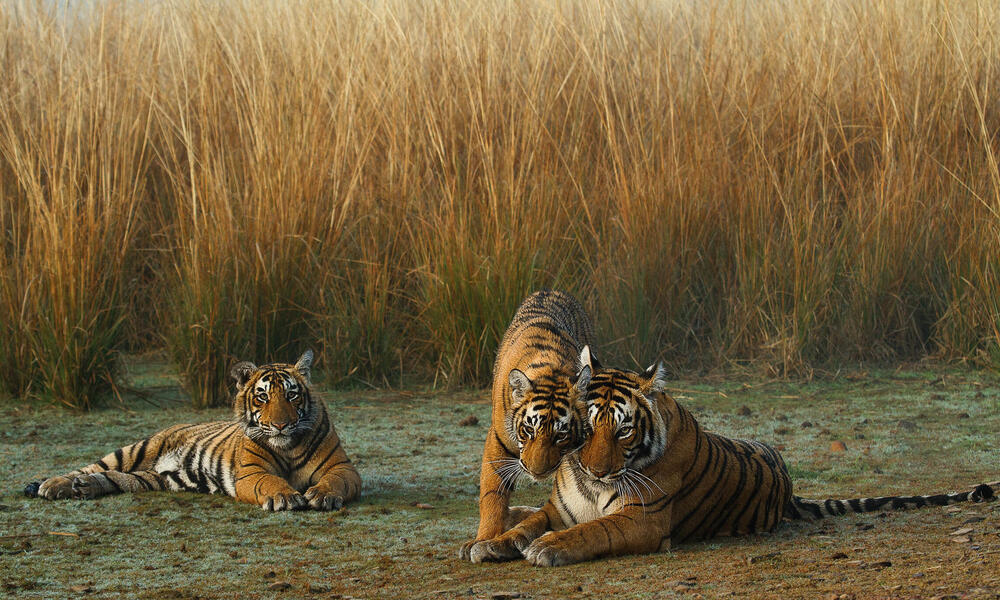SAVE THE TIGER
FACTs
After a century of decline, overall wild tiger numbers are starting to tick upward. Based on the best available information, tiger populations are stable or increasing in India, Nepal, Bhutan, Russia and China. About 5,574 tigers remain in the wild, according to the Global Tiger Forum, but much more work is needed to protect this species if we are to secure its future in the wild. In some areas, including much of Southeast Asia, tigers are still in crisis and declining in number.
Tigers: The Majestic Big Cats of Asia
Tigers, the largest of the Asian big cats, are iconic predators that rely on their keen sight and acute hearing to stalk and hunt their prey. These solitary hunters can consume an astonishing 80 pounds of meat in one sitting. On average, tigers give birth to litters of two to four cubs every two years. If a litter does not survive, the female may produce another within five months. Cubs typically gain independence around the age of two, with females reaching sexual maturity at three or four years old, and males at four to five years. Despite their strength and resilience, survival is challenging—nearly half of all tiger cubs do not survive beyond their second year.
Subspecies and Characteristics
Tigers are classified into two main subspecies: the continental tiger (Panthera tigris tigris) and the Sunda tiger (Panthera tigris sondaica). The continental tiger, which includes Bengal, Malayan, Indochinese, and Amur (Siberian) tigers, can weigh up to 660 pounds in males, making it the larger of the two. In contrast, the Sunda tiger, found exclusively in Sumatra, is smaller, with males weighing up to 310 pounds. Unfortunately, tigers native to Java and Bali are now extinct, and the South China tiger is considered functionally extinct.
Tigers are predominantly solitary, with the exception of mothers raising their young. Each tiger has a vast territory, the size of which is dictated by prey availability. They mark their territories through vocalizations, and physical signals such as scrapes and scent markings.
Challenges and Conservation
Across their natural habitats, tigers face immense threats from poaching, habitat loss, and retaliatory killings. With human populations continuing to grow, competition for space intensifies. Despite conservation efforts, these pressures have led to critical population declines. Tigers in Sumatra are the last of the Sunda island tigers, while their continental counterparts, including the Caspian tiger, have seen some populations, like the South China tiger, disappear almost entirely from the wild.
Acknowledgment
This overview was inspired by the wealth of information available on the World Wildlife Fund (WWF) website. Our gratitude extends to their continued efforts in raising awareness and protecting these magnificent creatures.
Photo Reference: The image accompanying this article is sourced from the World Wildlife Fund (WWF), highlighting their critical work in tiger conservation.

Lorem ipsum dolor sit amet, consectetur adipiscing elit. Quisque aliquet nisi vel metus pharetra, at congue sem tempor. Curabitur nec pharetra dolor. Fusce bibendum.